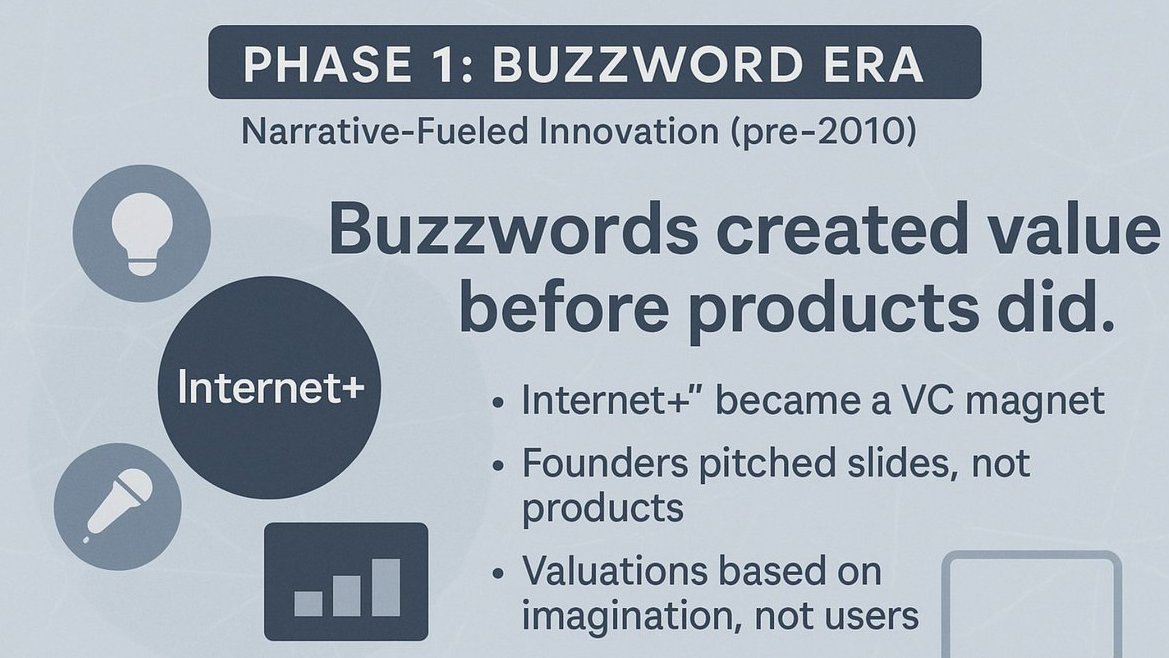From "burning money" to industrial ecology: Web3 is following the old path of the Internet.
To those who are confused during the blockchain revolution
Some people say that Crypto is a Ponzi scheme, a bubble, and a speculative game that is destined to go to zero.
Some people also say that Web3 is a revolution, a paradigm shift, and a new stage of civilization based on technological continuation.
Two voices, a torn scene of narrative.
Don’t rush to stand in line, let me first give a simpler conclusion:
The underlying logic of business has not changed.
Whether it is Web2 from portals to apps, or Web3 from issuing coins and telling stories to competing in infrastructure, behind the prosperity, it is actually the same old path - but this time, the narrative is wrapped in the protocol, and capital is hidden in the code.
Looking back at the past decade, the path of China's Internet is very clear: concept-driven, financing runs ahead of user growth; subsidies attract traffic, capital drives growth; then layoffs, efficiency improvements, and profitability; followed by platform transformation and technology reconstruction. Today's Web3 is also following a similar development rhythm.
Over the past year, the competition between project parties has evolved into a competition using TGE and Airdrop to acquire users. No one wants to fall behind, but no one knows how long this "user exchange" competition will last.
So, when I wrote this article, I tried to break down those seemingly messy narratives into several more traceable stages.
Let’s follow the footsteps of history to see how Web3 has come to where it is today and where it might go.
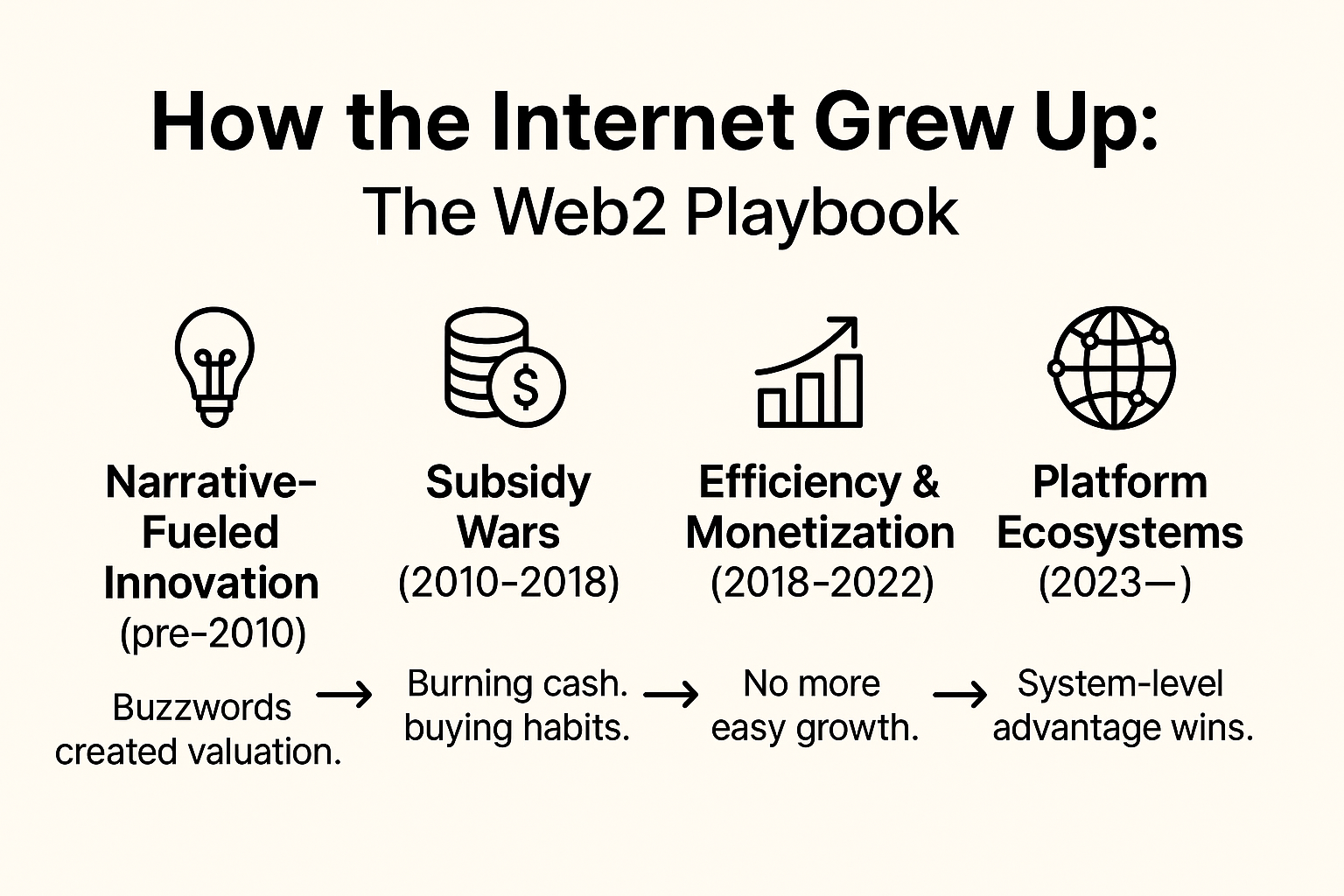
1. Review of the development stages of the Internet industry: from currency expansion to industrial collaboration
I believe most people are familiar with this history:
The Internet used to be a national carnival . Every day, more than a dozen apps would compete to let you use them for free . One mobile phone number could be used to eat, take a taxi, get a haircut, and get a massage, just like the Chinese New Year.
Today's Internet is a systematic project that has already run most of the way: you know which platform to buy the cheapest things, which app is most efficient in which scenario, the ecological structure has long been established, and innovation is hidden in efficiency.
So I won’t go into details, but will simply break it down into four stages . Reviewing these logics may help us better understand the path that Web3 is currently replicating.
1. Narrative-driven, mass innovation stage (before 2010)
That was an era when trends were defined by “nouns”.
"Internet +" has become a universal key. No matter what you do in healthcare, education, travel, or local life, as long as you put these three words, you can leverage hot money and attention. At that time, entrepreneurs were not in a hurry to make products, but first found a track, created concepts, and wrote BP. Investors were not chasing the revenue curve, but whether they could tell a story that was "new enough, big enough, and imaginative enough."
O2O, social e-commerce, sharing economy, under the rotation of nouns, project valuations soared, and the pace of financing was dominated by the rhythm of narrative. The core asset is not users, products, or data, but a financing PPT that is well presented and in line with the trend.
This is also an era where "whoever stands first has the opportunity" . Verifying the product and running the model is the second step. Only by telling the story in a popular way can you be qualified to enter the competition.
2. Expansion by spending money and competing for traffic (2010 – 2018)
If the previous stage was about attracting attention through stories, this stage is about grabbing the market through subsidies.
From the taxi war between Didi and Kuaidi to the bicycle melee between Mobike and ofo, the entire industry has fallen into a highly consistent strategy: using capital to exchange for scale, using price to exchange for habits, and using losses to exchange for entry. Whoever can burn more rounds of financing will be qualified to continue to expand; whoever can get the next round of investment will be able to leave a position on the battlefield.
This is an era where "grabbing users" is put above everything else. Experience, efficiency, and product barriers are all put on the back burner. The key lies in who can be the first to become the user's default choice.
As a result, the subsidy war intensified, and low prices became almost standard: taxis cost less than 5 yuan, and bike rides cost one cent. Offline stores posted App QR codes, waiting for you to eat, cut hair, and have massages for free. It seems to be a service popularization, but in fact it is a battle for traffic controlled by capital.
It’s not about who has the better product, but who can spend more money; it’s not about who can solve the problem, but who can “enclose the land” faster.
In the long run, this also lays the foundation for the subsequent refined transformation - when users are bought, more effort must be spent to retain them; when growth is driven by external forces, it is destined to be difficult to close the loop.
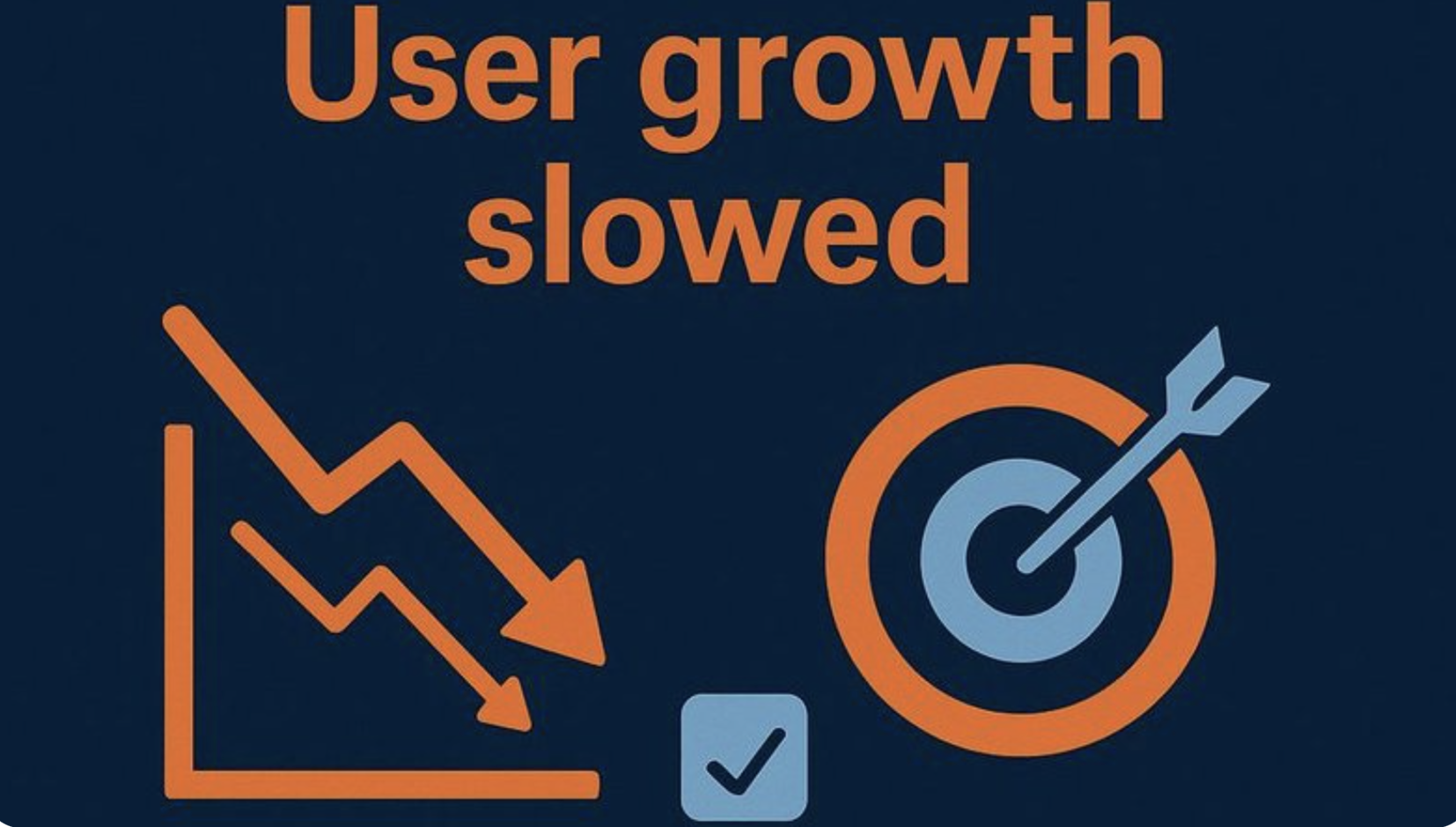
3. Implementation and refined operation stage (2018 – 2022)
When the story is told for too long, the industry will eventually return to a realistic problem: "After growth, how to implement it."
Since 2018, as the growth rate of mobile Internet users has slowed down, the traffic dividend has gradually faded and the cost of acquiring customers has continued to rise.
According to QuestMobile data, by the end of September 2022, China's mobile Internet monthly active users will be close to 1.2 billion, an increase of only about 100 million from 2018, which took nearly four and a half years, and the growth rate has slowed significantly. At the same time, the scale of online shopping users will reach 850 million in 2022, accounting for nearly 80% of the total number of netizens, and the space for user growth is approaching saturation.
At the same time, a large number of "story-type" projects driven by financing gradually withdrew from the market. O2O and the sharing economy were the areas with the most concentrated liquidations during this period: Jiedian, Bluegogo, Wukong Travel and other projects collapsed one after another, and behind them was a whole set of growth models that were not self-consistent and lacked user loyalty and were eliminated by the market.
But it was during this period of decline that a number of truly successful projects emerged. They have one thing in common: they did not rely on short-term popularity stimulated by subsidies, but instead completed the closed-loop construction of the business model through real rigid demand scenarios and system capabilities.
For example, Meituan has gradually built a complete service chain from ordering to fulfillment, from traffic to supply in the local life track, becoming a platform-type infrastructure; Pinduoduo has quickly penetrated the minds of users in the sinking e-commerce market with its extreme supply chain integration and operational efficiency; social networking is firmly controlled by Tencent, e-commerce is fully occupied by Alibaba, and games are concentrated in the hands of Tencent and NetEase.
What they have in common is not "thinking further" but running more steadily and calculating more clearly - structurally they have completed the closed loop from traffic to value and truly become sustainable product systems.
At this stage, growth is no longer the only goal. Whether growth can be transformed into structural retention and value accumulation is the real watershed that determines the life or death of the project. Extensive expansion is eliminated at this stage, and the ones that really stay are those systematic projects that can build a positive feedback mechanism between efficiency, products, and operations.
This also means that the era of narrative-driven business is over, and business logic must have the ability to "close itself": retain users, support the model, and run the structure.
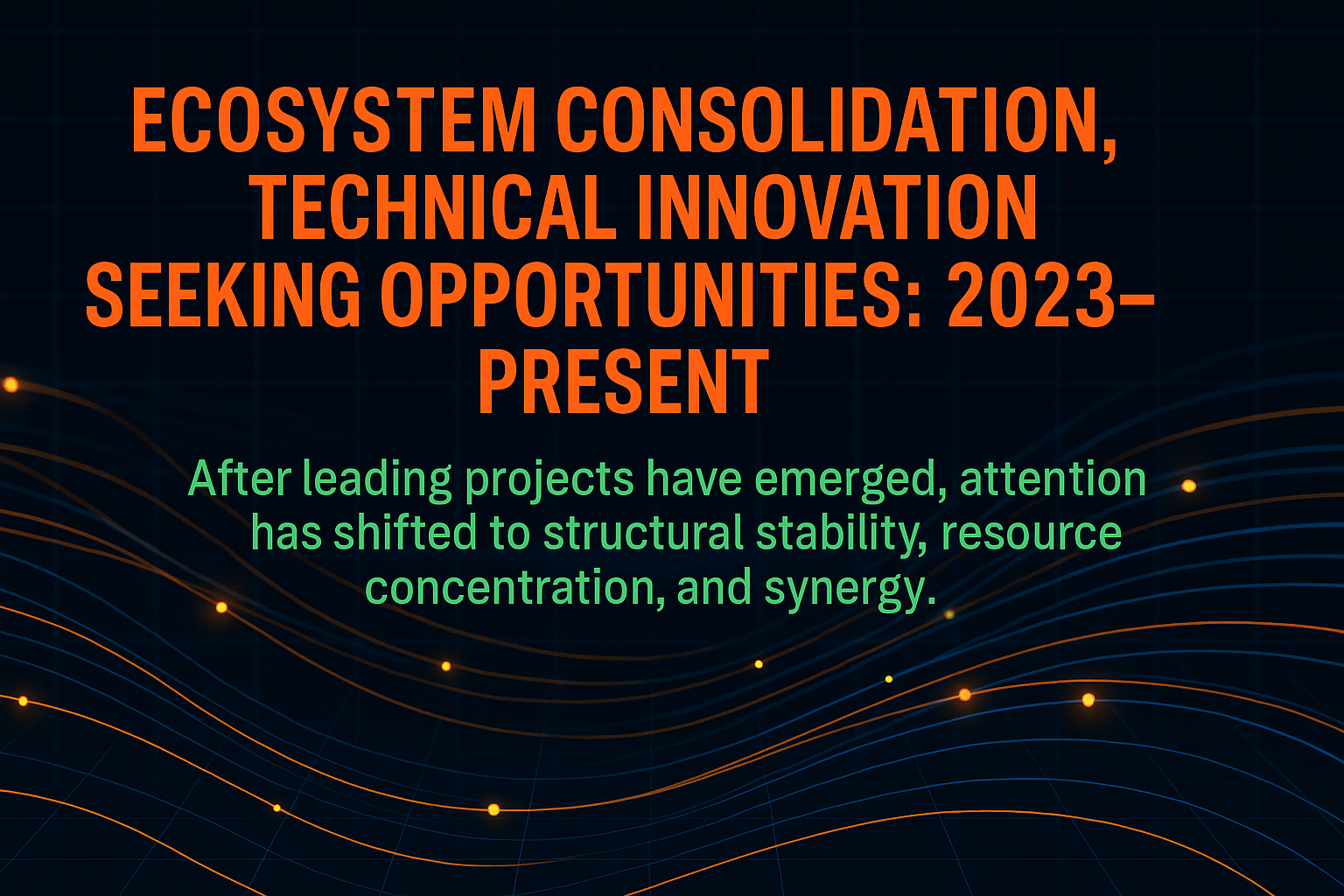
4. The ecosystem is basically established, and technological change seeks opportunities (2023 to present)
After the leading projects emerged, the survival problem has been solved by most projects, but the real differentiation has just begun.
Competition between platforms is no longer a battle for users, but a competition of ecological capabilities. As the leading platforms gradually close their growth paths, the industry has entered a period dominated by structural stabilization, resource concentration, and collaborative capabilities. The real moat is not necessarily the leading function, but whether the internal circulation of the system is efficient, stable, and self-consistent.
This is a stage for system players. The pattern is basically finalized, and if new variables want to break through, they can only look for gaps and technical breakpoints on the edge of the structure.
At this stage, almost all high-frequency and rigid demand tracks have been demarcated by giants . In the past, they could compete for position by "launching early and burning money quickly", but now, growth must be embedded in system capabilities. The platform logic has also been upgraded: from multi-product stacking to ecological flywheel, and from single-point user expansion to organizational-level collaboration.
Tencent has connected WeChat, mini-programs, and advertising systems to build an internal circulation closed loop; Alibaba has reorganized Taobao, Cainiao, and DingTalk to horizontally connect business links in an attempt to regain efficiency leverage. Growth no longer relies on new users , but on the structural compounding brought about by the self-operation of the system.
As user paths, traffic entrances, and supply chain nodes are gradually controlled by a few leading platforms, the industrial structure has begun to become closed , leaving increasingly limited space for new entrants.
But it is precisely in this environment of structural contraction that ByteDance becomes an outlier.
It did not try to compete for resources in the existing ecosystem, but instead took a detour and reconstructed the content distribution logic using recommendation algorithms, starting from the underlying technology. In the context of mainstream platforms still relying on social relationship chains for traffic scheduling, ByteDance built a distribution system based on user behavior, thereby establishing its own user system and business closed loop.
This is not an improvement on the existing pattern, but a technological breakthrough that bypasses the existing path and rebuilds the growth structure.
The emergence of ByteDance reminds us that even if the industry structure tends to solidify, as long as there are structural faults or technological gaps, new players may still emerge. It’s just that this time, the path is narrower, the pace is faster, and the requirements are higher.
Web3 is in a similar critical zone today.
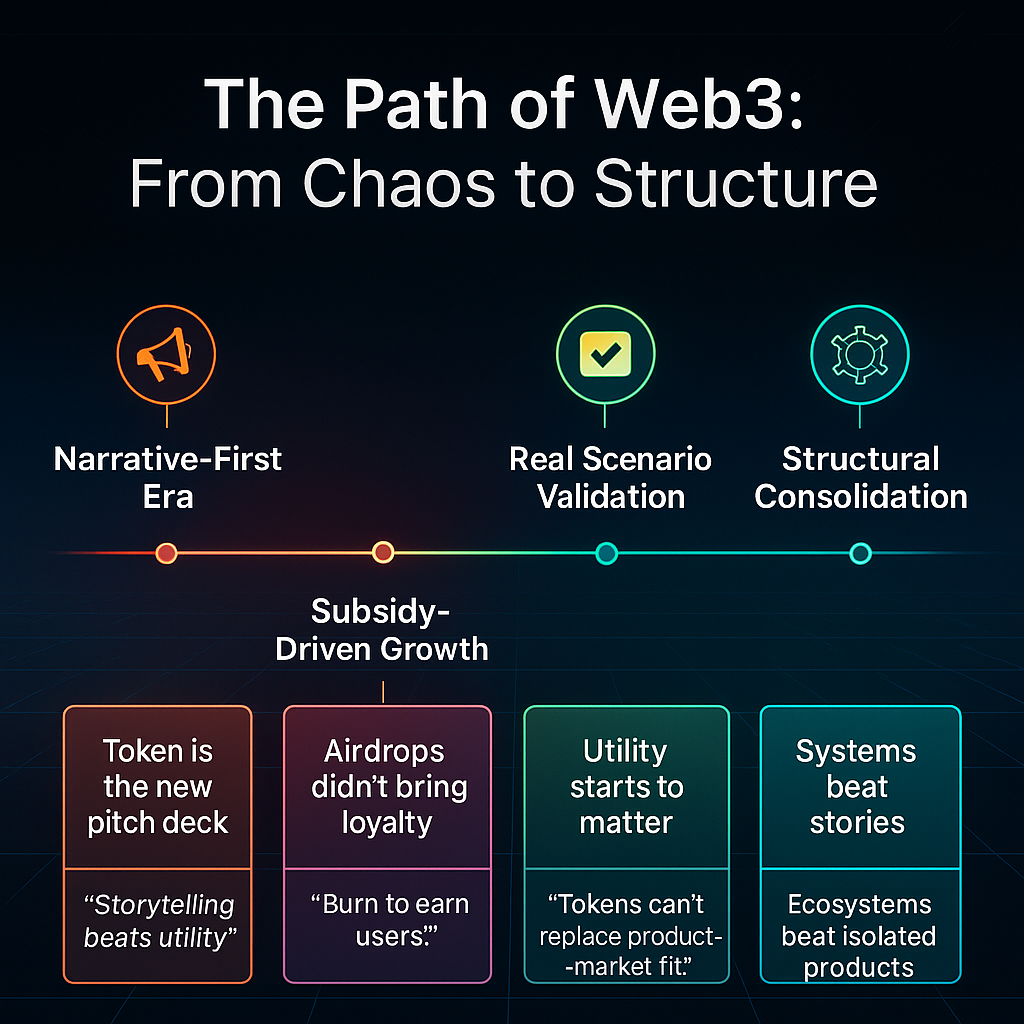
2. The Current Stage of Web3: A “Parallel Mirror” of the Internet’s Evolutionary Logic
If the rise of Web2 is an industrial restructuring driven by mobile Internet and platform models, then the starting point of Web3 is a system reconstruction based on decentralized finance, smart contracts and on-chain infrastructure.
The difference is that Web2 builds a strong connection between the platform and users; while Web3 attempts to break up and distribute "ownership" and reorganize new organizational structures and incentive mechanisms on the chain.
But the underlying driving force has not changed : from story-driven to capital-driven; from user competition to ecological flywheel, the path that Web3 has taken is almost identical to that of Web2.
This is not a simple comparison, but a parallel reproduction of the path structure.
Only this time, what is burned is token incentives; what is built is a modular protocol; what is rolled up is TVL, active addresses and airdrop points table.
We can roughly divide the development of Web3 to date into four stages:
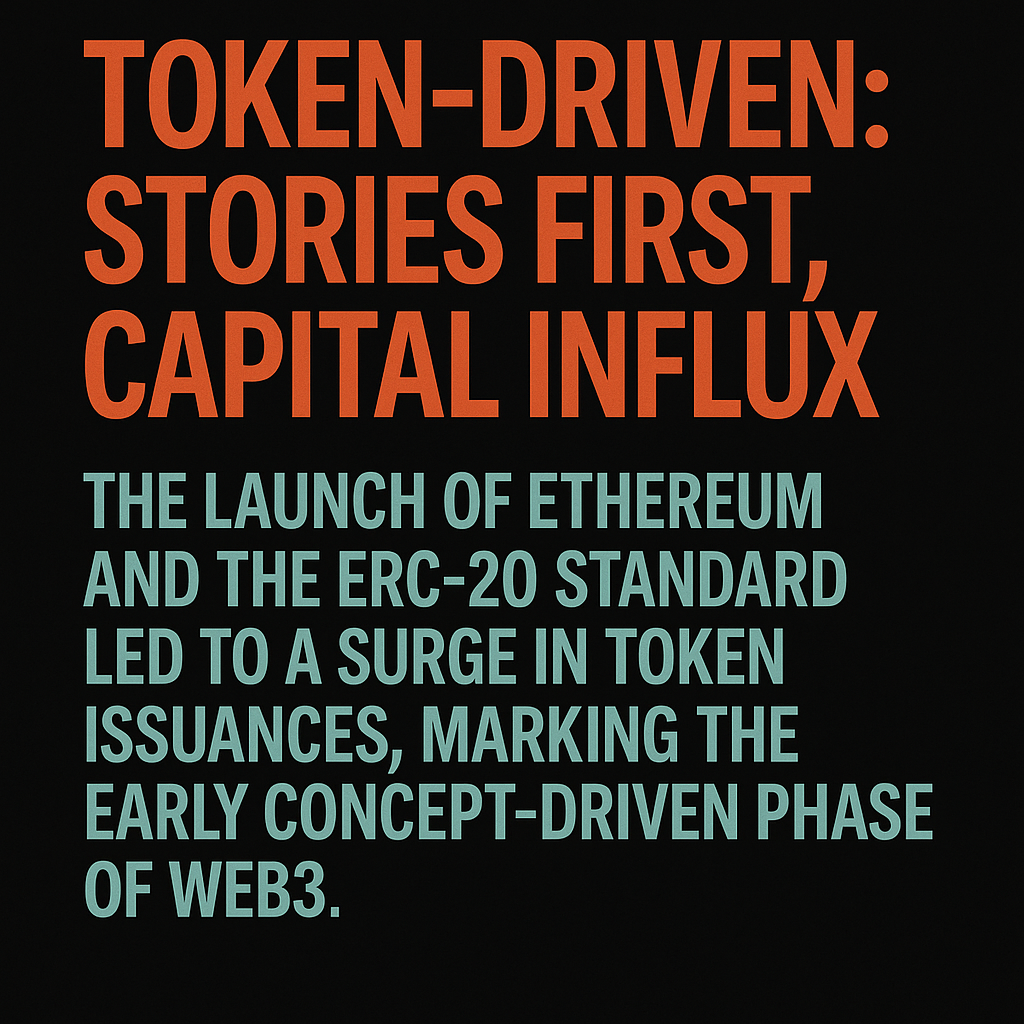
1. Concept-driven stage - coin issuance-driven: stories come first, capital pours in
If the early days of Web2 relied on the "Internet+" story template, then the opening remarks of Web3 are written in the smart contract of Ethereum.
In 2015, Ethereum was launched, and the ERC-20 standard provided a unified interface for asset issuance, making "issuing coins" a basic capability that all developers can use. It did not change the essential logic of financing, but greatly reduced the technical threshold for issuance, circulation, and incentives , making "technical narrative + contract deployment + token incentives" a standard template for early Web3 startups.
The explosion at this stage is driven more by technology - for the first time, blockchain empowers entrepreneurs in a standardized form, allowing asset issuance to move from a licensing system to open source.
There is no need for a complete product or mature users. As long as there is a white paper that can clearly explain the logic of the blockchain 1.0 era driven by blockchain technology, an attractive token model, and an executable smart contract, the project can quickly complete the closed loop from "idea" to "financing."
The early innovation of Web3 is not because the project is so smart, but because the popularization of blockchain technology has brought imagination to the blockchain 1.0 era.
Capital has also quickly formed a "betting mechanism": whoever occupies a new position first, starts the market first, and spreads the narrative first will have the potential to obtain exponential returns.
This has given rise to an “unprecedented capital efficiency”: Between 2017 and 2018, the ICO market experienced an unprecedented explosive growth, becoming one of the most controversial and iconic financing stages in blockchain history.
According to CoinDesk, in the first quarter of 2018, ICO financing totaled $6.3 billion, exceeding the total financing for the whole of 2017 by 118%. Among them, Telegram's ICO raised $1.7 billion, and EOS raised $4.1 billion in one year, setting a historical record.
In the window period of "everything can be blockchain" - as long as you put a label and build a narrative, even if the implementation path is not yet clear, you can pre-empt future valuation imagination. DeFi, NFT, Layer 1, GameFi... Every hot word is a "window". The project valuation soared to hundreds of millions of dollars, or even billions, before the tokens were circulated.
This is an opportunity to enter the capital market with a low threshold, and a relatively clear exit path has gradually formed: occupy a position in the primary market in advance, stimulate emotions in the secondary market through narrative and liquidity, and then complete the exit during the window period.
Under this mechanism, the core of pricing is not how much the project has done, but who secures a position earlier, who is better at creating emotions, and who has the window to release liquidity.
It is essentially a typical feature of the new paradigm in the early days of blockchain - the infrastructure has just been put in place, the cognitive space has not yet been filled, and the price is often formed before the product itself.
The “concept dividend period” of Web3 comes from this: value is defined by narrative, and exit is driven by emotions. Projects and capital seek certainty from each other in a liquidity-driven structure.
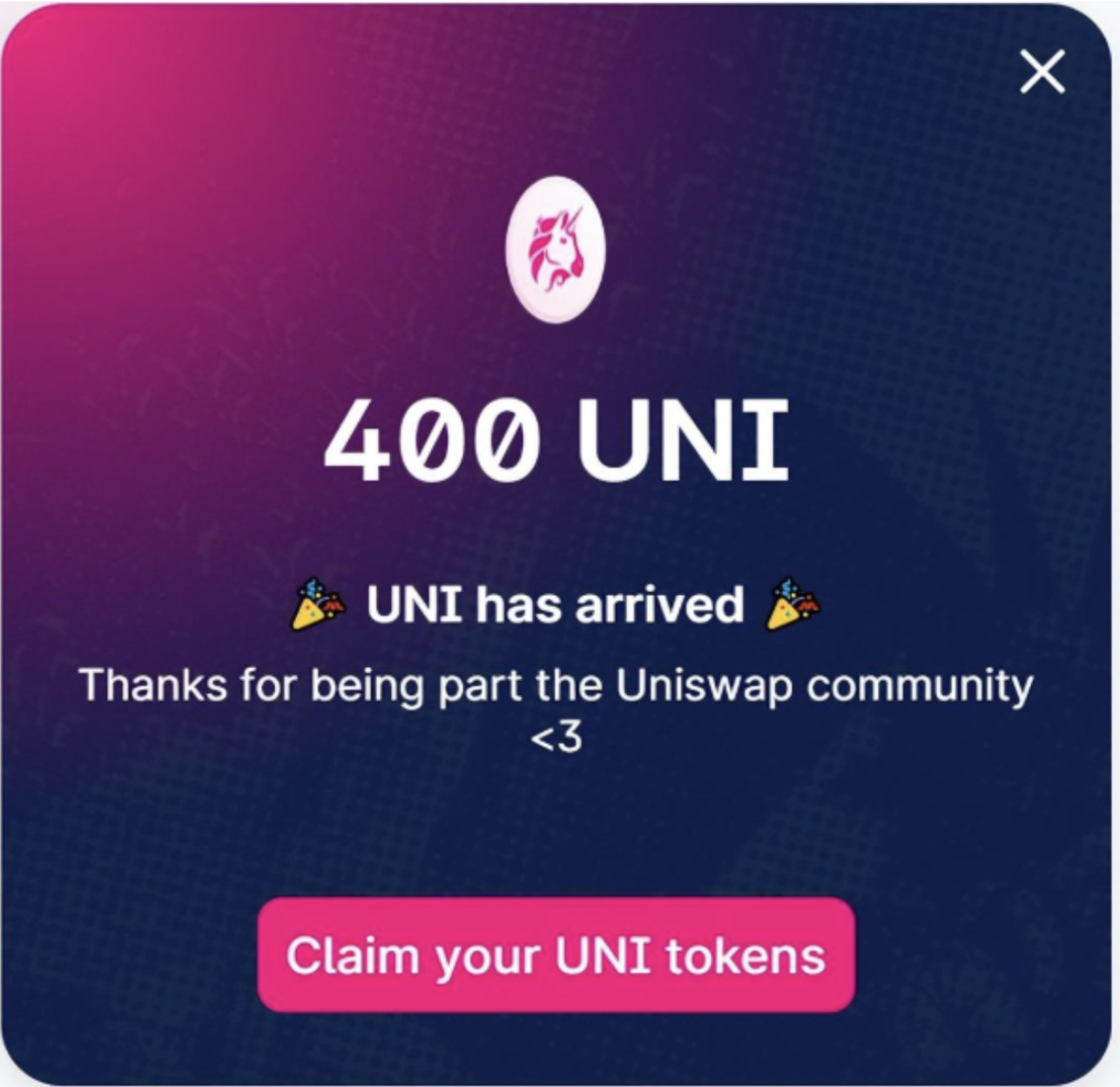
2. The stage of burning money to expand: projects are crowded and the battle for users is in full swing
All the changes started with the "most expensive thank-you letter in history" .
In 2020, Uniswap airdropped 400 UNI tokens to early users, each worth about $1,200 at the time. The project called it "feedback," but the industry understood it in another way: the optimal solution for cold start.
At first, it was just a gesture of "giving back to the community", but it inadvertently opened the Pandora's box of the industry: the project team discovered that issuing coins could exchange for loyalty, traffic, and even create an illusion of a community.
Airdrops have gone from being an option to being a standard feature.
Since then, the project owners have suddenly realized that almost all new projects use "airdrop expectations" as the default module for cold start . In order to show the market their prosperous ecosystem, they use tokens to purchase user behavior. The points system, interactive tasks, and snapshots have become a must. A large number of projects have fallen into the illusion of growth that is "incentive-driven rather than value-driven."
The on-chain data soared all the way, and the founders were immersed in the illusion of "success": before TGE, there were millions of users and hundreds of thousands of daily active users; after TGE, the scene cooled down instantly.
I still remember that in 2024, the DAU on the Fusionist chain exceeded 40,000, but just after the Binance listing announcement, the on-chain activity almost dropped to zero.
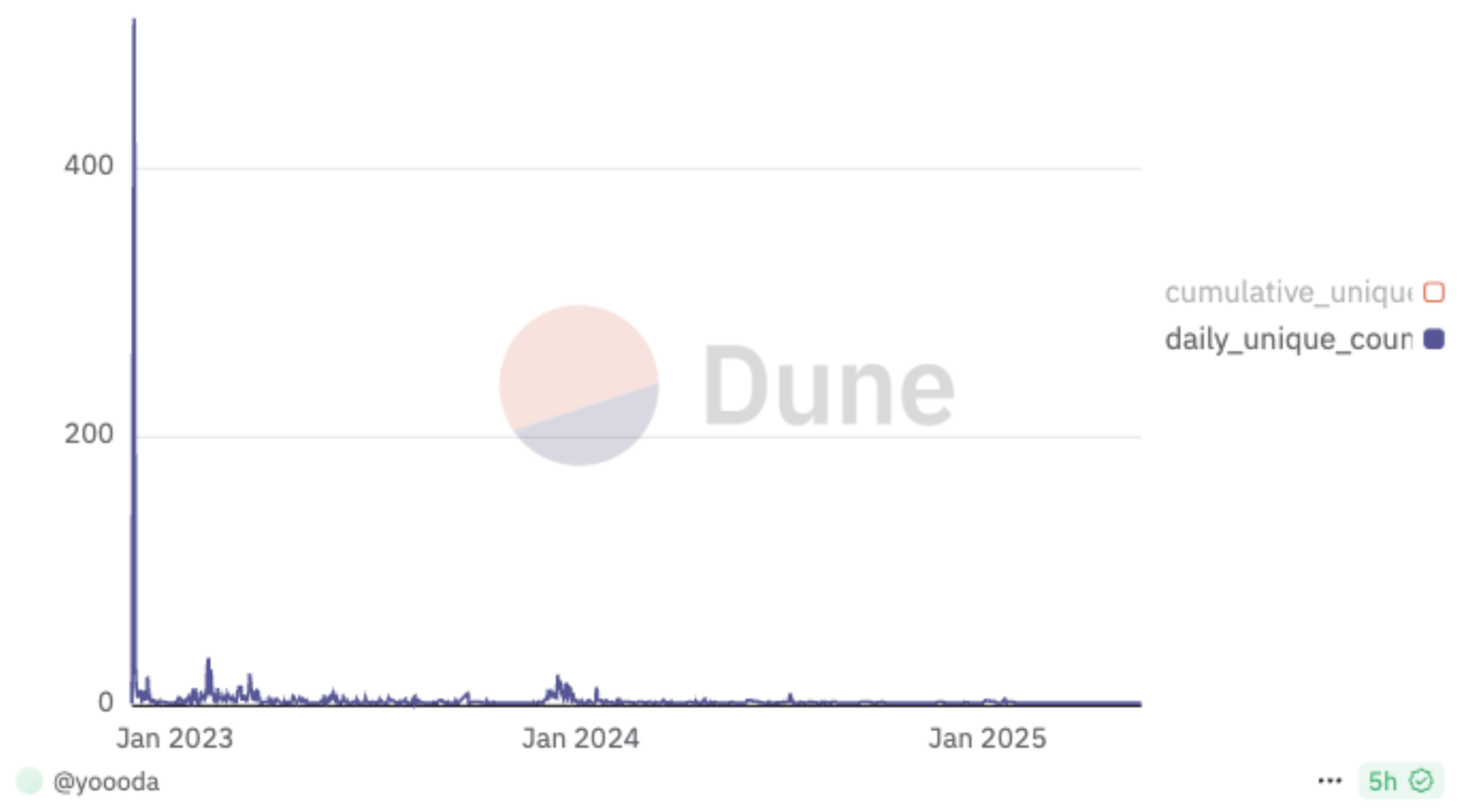
I am not denying the existence of airdrops. The essence of airdrops is to purchase user behavior, which is an effective means of attracting new users without consuming financing funds during cold start. But its marginal effect is rapidly declining. A large number of projects have fallen into the formulaic cycle of airdrops to attract new users. After attracting new users, whether your business scenarios and product capabilities have the ability to retain users is the real return of value and the only correct answer for the project to survive. (Note: Projects that survive by manipulating the secondary market with funds are not within the scope of this discussion)
In the final analysis, bribing users to buy is not the core of growth. Without a commercial basis or even a scenario, airdrops ultimately consume the interests of the project or users. When the business model is not closed, tokens become the only reason for users to act. Once TGE is completed and the rewards are terminated, users will naturally turn around and leave.
3. Business verification stage - real scene, narrative verification
I often advise project owners to think clearly about one thing before distributing coins:
What problem are you solving for which scenario? Who is the most critical contributor? After TGE, will this scenario still hold true? Will anyone really stay to use it? Many project owners told me that they can quickly achieve user growth through token incentives. I always ask, "What happens next?"
Usually at this time, the project team will be silent for a while and smile: "Oh..."
And then, nothing happened. If you just want to get some interaction by "sending incentives", then you might as well send memes directly. At least everyone knows that this is an emotional game and there is no need to bear the expectation of staying.
Finally, everyone started to look back: What kind of structure did all this traffic, interaction, and coins lead to? At the end of the coin distribution, I turned out to be a clown🤡 .
So the keywords at this stage become: usage scenarios, user needs, and product structure. Only by relying on real scenarios and clear structures can you find your own growth path. To be honest, I personally don’t like Kaito’s business logic - it is more like an extreme form of "bribery culture", which implies a high degree of utilization of incentive mechanisms, or even a repackaging of the relationship between the platform and content.
But it is undeniable that Kaito succeeded. It is a real business scenario. The expectations before TGE became an accelerator for the project to occupy the market, and after TGE, the music continued. This is because Kaito provides a business logic that allows KOLs to expose the project, and the key figures still remain on the Kaito platform itself.
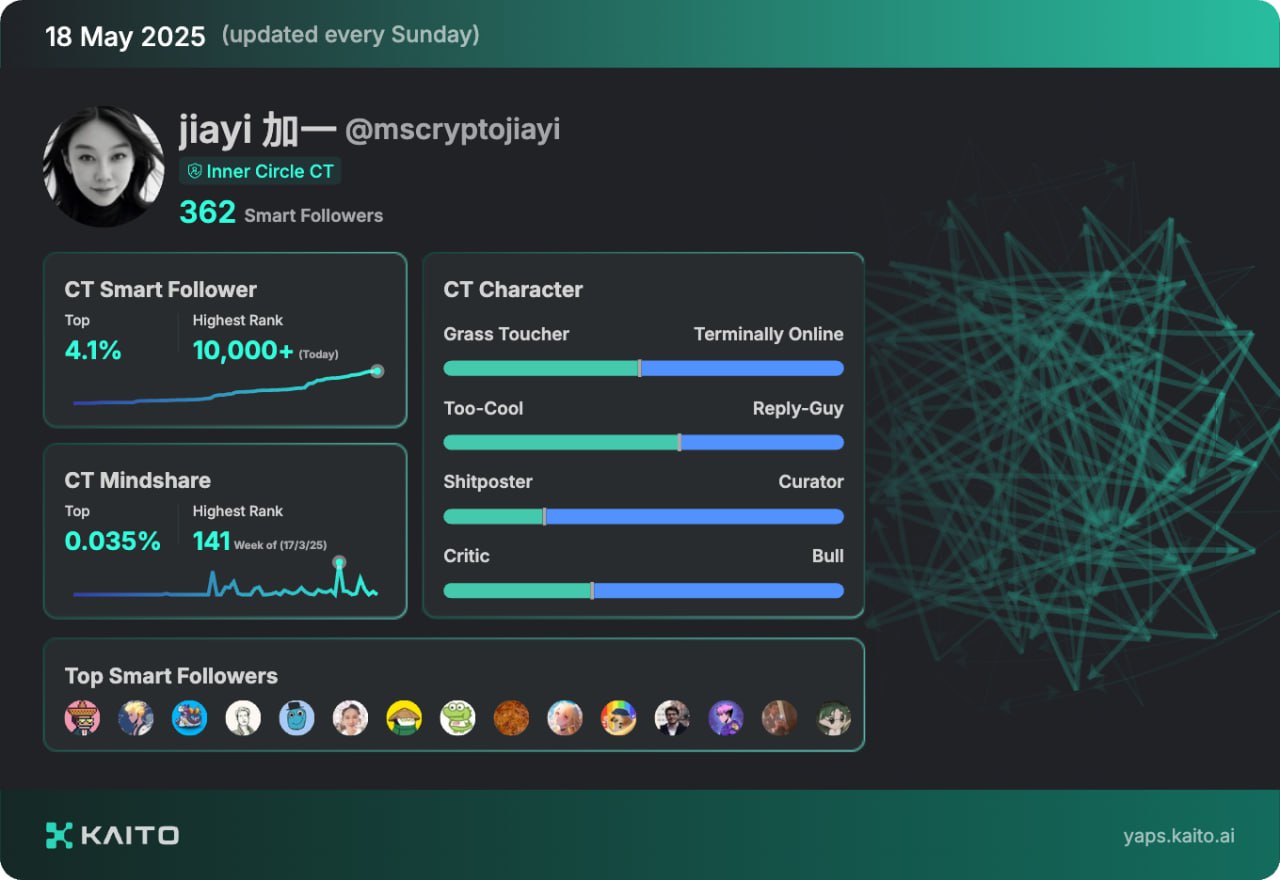 Although many KOLs may be aware that this logic will eventually backfire on them, in a market of structural opportunism , "strategic compliance" has become the most rational choice.
Although many KOLs may be aware that this logic will eventually backfire on them, in a market of structural opportunism , "strategic compliance" has become the most rational choice.
At the same time, I am also pleased to see that more and more projects are beginning to be built around real scenarios, whether it is transactions, DeFi, or basic capabilities such as identity systems.
Those teams that choose the right direction at the right time and polish out real products are gradually taking root and building their own industrialization path through the positive cycle capabilities of vertical scenarios - from usage to retention, from retention to monetization.
The most typical example is exchange products: they convert high-frequency demand into structural traffic, and then complete the closed loop through assets, wallets, and ecological linkage, thus embarking on the "structural evolution line" in Web3 projects.
4. Structural sedimentation period: platform finalization and variable shrinkage
A truly positive business scenario is one in which a project gains a voice in the industry.
For example, Binance started with trading, and gradually opened up liquidity, asset issuance, on-chain expansion and traffic entry, forming a full-process scheduling system from off-chain to on-chain; Solana, through the use of light assets and underlying performance, has precipitated a feedback structure for the community, developers and tool system.
This is a cycle in which the industry shifts from project testing to structural sedimentation - no longer competing for speed, but starting to compete on system completeness.
But this does not mean that new projects have lost their chance to break through. The projects that can really stand out are not the ones with the loudest voice or the broadest narrative, but the ones that can "fill in the gaps" in structure or "reconstruct" in model.
Do you still remember ByteDance in the mobile Internet era?
I believe that in the post-blockchain era, a new cycle driven by AI is coming. There will definitely be projects like ByteDance that rely on AI to quickly run through the structure under the right incision, achieve industrial breakthroughs and self-closure.
The platform stage of Web2 left behind giants and flywheels, as well as niche disruptors such as ByteDance; the structural stage of Web3 may also give birth to the next variable project that "breaks out from the edge" with the correct structure.
Let’s imagine that if it is infrastructure , it should be infrastructure built for the native AI era, promoting the development of technology products in this era, just like the mission of Ethereum in the blockchain 1.0 era mentioned above ;
If it is DAPP, then it must be an application that uses AI to break the original user threshold (the web3 user threshold is too high) and break the original business order.
If someone asked me, how will the future of web3 develop?
I would say: “Just like everything can be added to the Internet, its real potential is to reconstruct the usage path, lower the threshold for collaboration, and give birth to a group of products and systems that can really run in the post-blockchain era.

